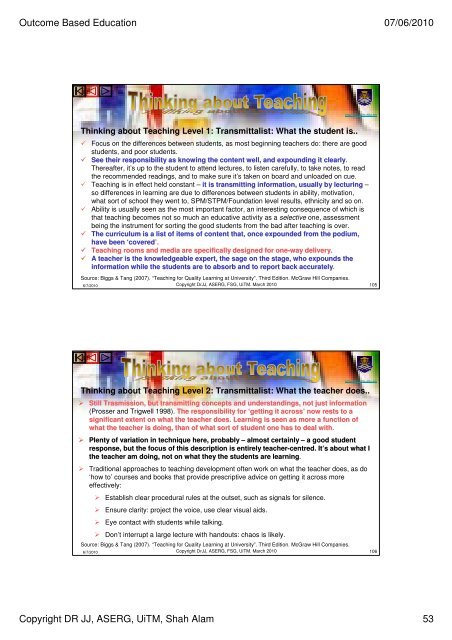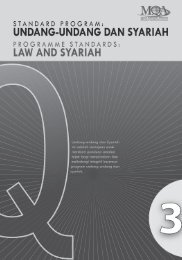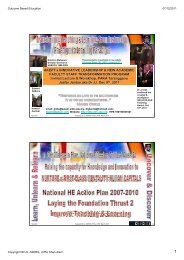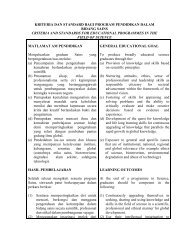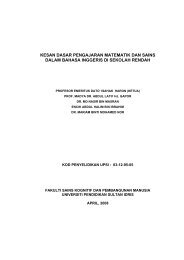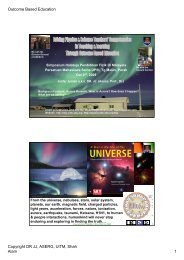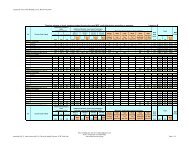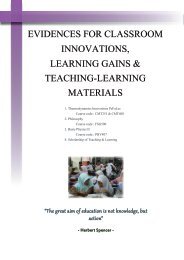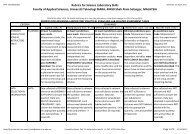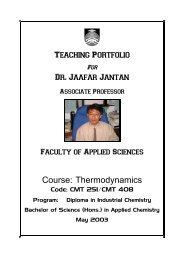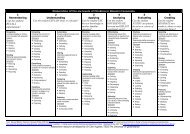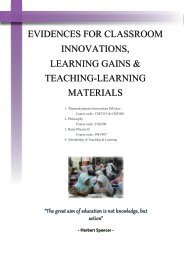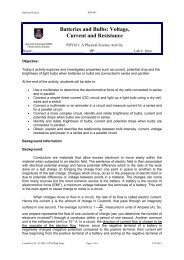FSG-PPT-060610 (pdf) - DrJJ - UiTM
FSG-PPT-060610 (pdf) - DrJJ - UiTM
FSG-PPT-060610 (pdf) - DrJJ - UiTM
Create successful ePaper yourself
Turn your PDF publications into a flip-book with our unique Google optimized e-Paper software.
Outcome Based Education 07/06/2010http://drjj.uitm.edu.myThinking about Teaching Level 1: Transmittalist: What the student is.. Focus on the differences between students, as most beginning teachers do: there are goodstudents, and poor students. See their responsibility as knowing the content well, and expounding it clearly.Thereafter, it’s up to the student to attend lectures, to listen carefully, to take notes, to readthe recommended readings, and to make sure it’s taken on board and unloaded on cue. Teaching is in effect held constant – it is transmitting information, usually by lecturing –so differences in learning are due to differences between students in ability, motivation,what sort of school they went to, SPM/STPM/Foundation level results, ethnicity and so on. Ability is usually seen as the most important factor, an interesting consequence of which isthat teaching becomes not so much an educative activity as a selective one, assessmentbeing the instrument for sorting the good students from the bad after teaching is over. The curriculum is a list of items of content that, once expounded d from the podium,have been ‘covered’. Teaching rooms and media are specifically designed for one-way delivery. A teacher is the knowledgeable expert, the sage on the stage, who o expounds theinformation while the students are to absorb and to report back accurately.Source: Biggs & Tang (2007). “Teaching for Quality Learning at University”. Third Edition. McGraw Hill Companies.6/7/2010 Copyright <strong>DrJJ</strong>, ASERG, <strong>FSG</strong>, <strong>UiTM</strong>. March 2010 105http://drjj.uitm.edu.myThinking about Teaching Level 2: Transmittalist: What the teacher does..Still Trasmission, , but transmitting concepts and understandings, not just information(Prosser and Trigwell 1998). The responsibility for ‘getting it across’ now rests to asignificant extent on what the teacher does. Learning is seen as more a function ofwhat the teacher is doing, than of what sort of student one has to deal with.Plenty of variation in technique here, probably – almost certainly – a good studentresponse, but the focus of this description is entirely teacher-centredcentred. . It’s s about what Ithe teacher am doing, not on what they the students are learning.Traditional approaches to teaching development often work on what the teacher does, as do‘how to’ courses and books that provide prescriptive advice on getting it across moreeffectively:Establish clear procedural rules at the outset, such as signals for silence.Ensure clarity: project the voice, use clear visual aids.Eye contact with students while talking.Don’t interrupt a large lecture with handouts: chaos is likely.Source: Biggs & Tang (2007). “Teaching for Quality Learning at University”. Third Edition. McGraw Hill Companies.6/7/2010 Copyright <strong>DrJJ</strong>, ASERG, <strong>FSG</strong>, <strong>UiTM</strong>. March 2010 106Copyright DR JJ, ASERG, <strong>UiTM</strong>, Shah Alam 53


